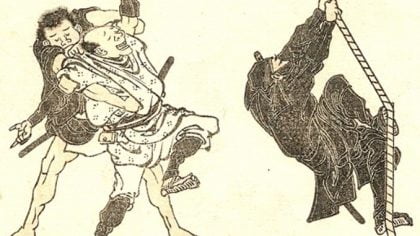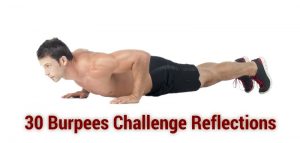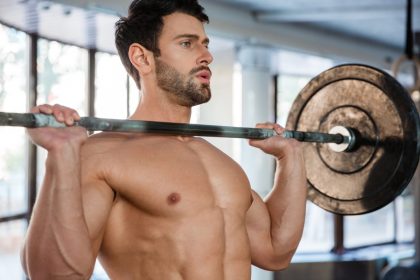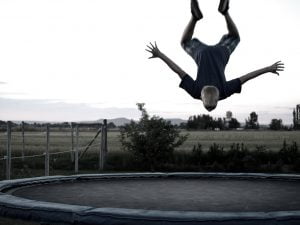Out of the many calisthenics exercises, what are some basics that would work your entire body?
After all, you have little time to spare for training. On a good day, you may have an hour. But on most days, thirty minutes is all you have.
That’s why you don’t want to spend hours learning, and then do hundreds of bodyweight exercises. In fact, you want to jump right into it immediately. For that, we’ll focus on a handful of exercises that will give you a full-body workout.
Pick Calisthenics Exercises that Make The Most Impact
Why should you Selectively train Using only the most suitable basic calisthenics exercises?

Training with the appropriate basic calisthenics exercises helps you with:
- Developing proper technique and joint strength to avoid injury
- Strengthening muscle and fine muscle control for complex moves
- Enhancing flexibility and mobility for functional movement
- Saving time by picking the exercises that make the most impact
- Reducing the learning curve for training
You’ll advance quicker in the long run. It ingrains good habits to avoid injury. And you’ll have an easier transition into street workout and parkour.
How do you know which calisthenics exercises are suitable?
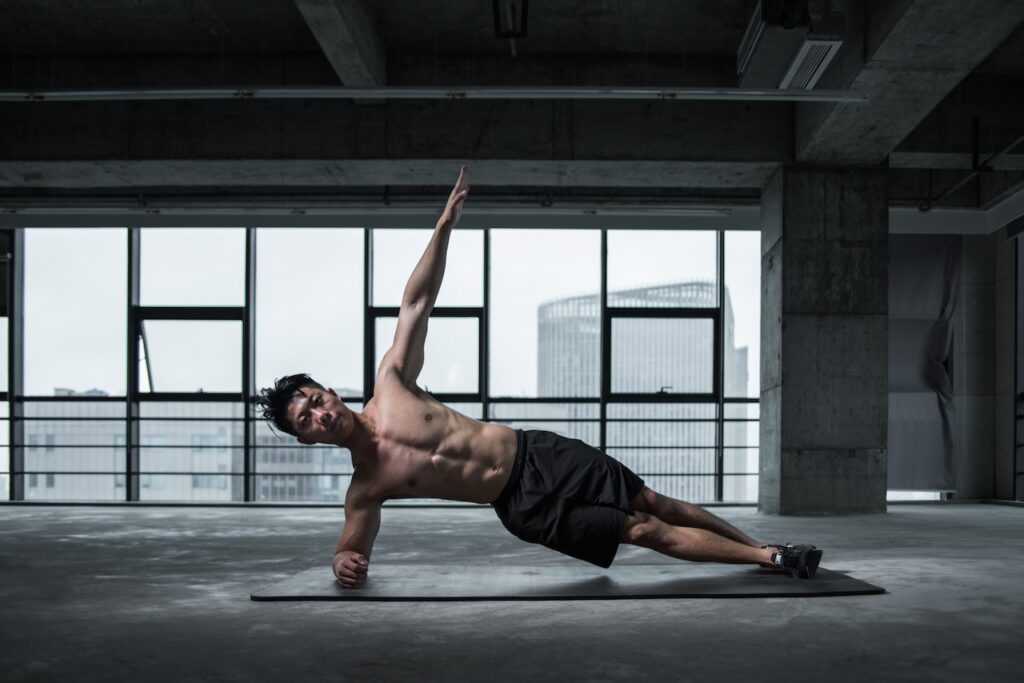
For a workout that saves you time, we must keep the number of calisthenics exercises to the bare minimum. It has to fit these criteria…
- Exercises must be enough for a full-body workout, and target all major muscle groups.
- List must be short enough to get an effective thirty-minute workout
- Each exercise is easy to build upon, step-by-step
- Include skill-work practice to help you progress into street workout, parkour or more…
Yet, there is no universal list of basic calisthenics exercises. Every training program recommends something different. So, what should you do?
Differences in Calisthenics Exercises Recommended
For some lists of calisthenics exercises, I referred to three books:
- Complete Calisthenics (by Ashley Kalym)
- Convict Conditioning – Kindle version (by Paul Wade)
- The Ultimate Guide to Calisthenics (by Jeff Cowan).
The exercise recommendations are different because of each book’s purpose and training approach.
Complete Calisthenics – Fundamental Five
Complete Calisthenics is an encyclopedia of bodyweight training. Its purpose is to empower you to create your own workout routine.
So, the book not only shows exercises but also introduces warm-up, mobility, and stretching drills. It even advises on workout guidelines and common injuries.
To ensure you are good enough to start your own program, you must pass a test, which consists of 5 fundamental exercises. That’s why it prescribes those exercises with reps.
- Push ups (20 reps)
- Pull ups (10 reps)
- Tricep dips (10 reps)
- Hanging knee raises (10 reps)
- Squats (25 reps)
Convict Conditioning – The Big Six
Convict Conditioning recommends six calisthenics exercises for each major muscle group. It doesn’t prescribe a one-size-fits-all preset number of reps.
People who use this program aren’t looking to create their own workout. Instead, they’re looking for a step-by-step guide to the advanced levels of calisthenics. They want a foolproof way to develop finer skills like balance and flexibility.
Thus, each exercise has ten progression steps. Each step specifies different forms of the same exercise. Of course, the first progression is the easiest, while the last is the most challenging.
- Pistol Squat
- One Arm Hanging Leg Raises
- One Arm Push Up
- Handstand Push Up
- One Arm Pull Up
- Bridges
For example, the first progression for squats is the shoulder stand squat. It’s meant to build proper technique, and not strength. That’s why you’ll do the squat upside down.
Finally, in the last progression, you’ll do pistol squats – squatting with only one leg. The skills you build in the earlier steps are crucial to the balance and fine muscle control needed.
The Ultimate Guide to Calisthenics – 8 Fundamental Moves to Master
The Ultimate Guide to Calisthenics is almost the same as Convict Conditioning. Out of its eight exercises, six are exactly the same as Convict Conditioning.
It also lists calisthenics exercises with detailed progression steps – from easy to hard.
What’s different in this book is the added focus on calisthenics skill work, right from the start. This is evident from the two extra exercises (bolded). It even includes info on warming up, stretching, conditioning and mobility.
- Pistol Squat
- One Arm Hanging Leg Raises
- One Arm Push Up
- Handstand Push Up
- One Arm Pull Up
- Bridges
- Horizontal Row
- Plank To Planche
4 Observations about The Ultimate Guide to Calisthenics…

1. More than one pulling calisthenics exercise
First, this list has two pulling exercises. They are the one arm pull up and horizontal row front lever. Convict Conditioning has only one pulling exercise.
2. Equal number of pushing & pulling exercises

Second, there are an equal number of pushing and pulling exercises; two each. Convict Conditioning has only one pulling exercise.
3. Better mix of vertical & horizontal resistance exercises
Third, there is a better mix of vertical and horizontal resistance exercises. Horizontal: push ups, front lever and plank to planche; vertical: handstand push up and pull up. This develops the skill to move your body against gravity in any position. One advance move that requires this ability is the human flag.
4. Focus on skill-work
Fourth, plank to planche is actually a skill-work exercise. Many beginner programs neglect skill-work and focus on strength. This makes you unprepared for advanced calisthenics, which needs technique. So, The Ultimate Guide to Calisthenics trains the beginner in skill-work right from the start.
Summary Table Comparing Calisthenics Exercises
Let’s compare the exercises in a table.
| Complete Calisthenics | Convict Conditioning | The Ultimate Guide to Calisthenics |
|---|---|---|
| 5 moves | 6 moves | 8 moves |
| Push ups– 20 reps | Push ups | Push ups |
| Pull ups– 10 reps | Pull ups | Pull ups |
| Tricep dips– 10 reps | Handstand push ups | Handstand push ups |
| Hanging knee raises– 10 reps | Leg raises | Leg raises |
| Squats– 25 reps | Squats | Squats |
| – | Bridges | Bridges |
| – | – | Horizontal Row/Front Lever |
| – | – | Plank To Planche |
So, ultimately, which list of calisthenics exercises should a beginner focus on?
5 Calisthenics Exercises You Need As a Beginner
The common exercises in the three books are: push-ups, pull-ups, squats and leg raises. Combining these exercises, with bridges, gives you a full-body workout.
This is the least you need, to get started.
Although it still doesn’t include skill work, this is what you need to focus on as a beginner. Skill work is risky without proper guidance. Check out the end if you want to incorporate skill work.
#1. Push Ups (Press Ups)
While in a prone position, push your body away from the floor and lower it back down. Not only is this a common exercise, but it’s also the favoured punishment in the army and certain sports.
#2. Pull ups
The pull up is an upper-body exercise that requires you to hang on a bar with an overhand grip. You then pull your chest toward the bar. This is also the recommended basic calisthenic exercise for the three resources.
#3. Squats
The squat is no doubt the most basic calisthenics move for the lower body. All books recommend it. It works your glutes, hamstrings and quadriceps.
#4. Leg raises
Leg raises include both hanging and lying down variations. They are all different forms of the same exercise. The idea is to contract your core and raise your legs to build strength.
Again, all three books recommend leg raises as a basic exercise. Complete Calisthenics, in particular, prescribes hanging knee raises. This is an easier variation of hanging leg raises. The Ultimate Guide to Calisthenics specifies the one-arm leg raise as the final step.
#5. Bridges
Bridges strengthen your back and enhance your flexibility. Both Convict Conditioning and The Ultimate Guide to Calisthenics recommend this. Complete Calisthenics includes this as part of its encyclopedia of calisthenics exercises.
Developing Advanced Skills from the Start

To develop your skills for advanced moves, try these out with guidance. You need a proper step-by-step progression guide. If you don’t know what you’re doing, you will risk injury.
- Horizontal Row (Front Lever)
- Handstand Pushups
- Plank to Planche
So, consider The Ultimate Guide to Calisthenics for the progression steps. It will help you with calisthenics skill work.
Join The Bodyweight Basics Training Program!
Get progressive training in bodyweight basics and advanced moves like handstands, muscle ups, human flags and more.


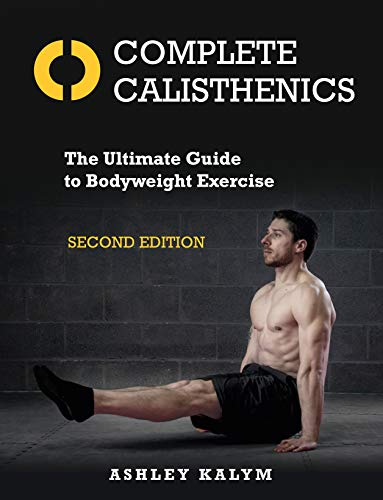

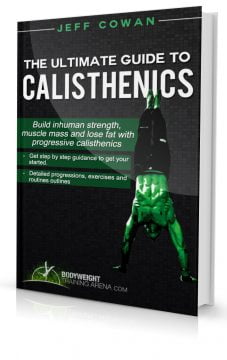
![How To Wake Up In The Morning With Energy? [Military Hack]](https://www.wayofninja.com/wp-content/uploads/2016/09/featured-5bx-3-post-420x236.jpg)
